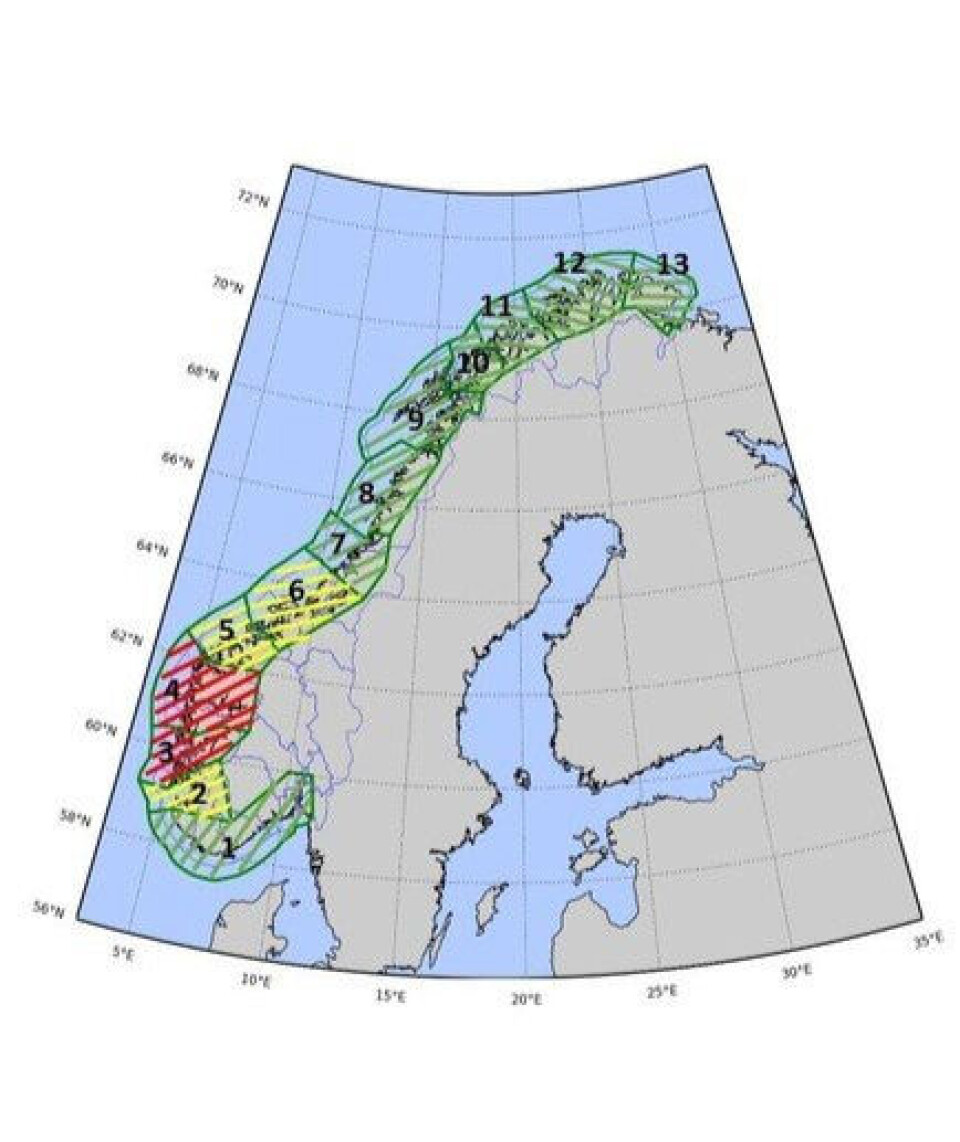
Norway ready to switch on salmon farming red light
Norway’s fisheries minister Harald Nesvik has told a conference in Bergen that he intends to “turn on the red light” that signals a reduction in biomass for some sites under the country’s “traffic light” system for salmon farming.
Speaking at the Tekna Aquaculture Conference this week, Nesvik said the system would be meaningless if he didn’t use the red-light option to reduce farm capacity where lice numbers were too high.
The traffic light system was introuced in 2017 and is updated every two years. It divides the country’s coast into 13 defined areas which are coloured green, yellow and red depending on the perceived risk of salmon lice-induced mortality on wild salmon. Capacity is adjusted by 6% upwards (green) or down (red). In yellow areas, capacity is frozen.
Wild salmon
“One thing I can say with certainty is that we are not going to say anything specific about this year’s colouring today. That’s because this is stock-sensitive information. We have to do things in the right order,” said Nesvik.
He further said that an expert group is now assessing the mortality of wild salmon due to salmon lice in the various production areas. A steering group will then evaluate the subject report, and only after this will Nesvik make the final decision.

Ready by December
Nesvik said that the colouring of salmon production areas will be completed during December, with subsequent capacity assessment.
“This time I’ll turn on the red light. The red light hasn’t been on in the previous round, but I’m turning this on now for the first time. This means that it may be appropriate to reduce production capacity in areas where the environmental status is unacceptable,” Nesvik told the audience.
He added that the rules about how capacity reduction is applied in the red zone were being discussed. Allocation of increased capacity will, according to Nesvik, be by the same method as in the previous round, when extra biomass was sold at fixed price and at auction.
‘Tools in the drawer’
“The reason I will switch on the red light is that it is meaningless to have a system of growth if you should only have growth and not have other means if the environmental status is not satisfactory. Then you must have enough tools in the tool drawer to be able to execute efficiently,” he continued.
He said the proposal for the allocation regulation follows largely the same process as last time.
“Later this autumn we will publish important details such as the price and allocation of increased capacity for existing permits, the allocation of MTB (maximum allowed biomass) between existing permits and new permits and the auction format for the allocation of new permits,” he said.






















































